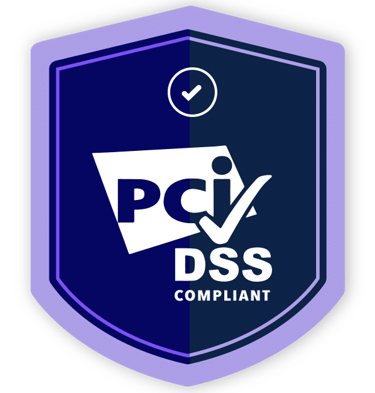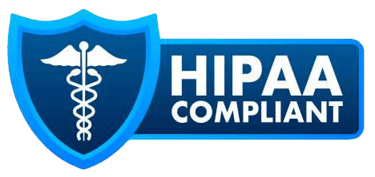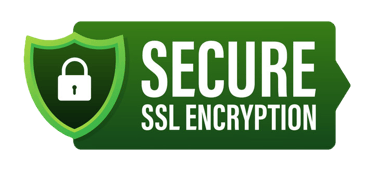Top Hospice Documentation Mistakes That Trigger Citations — and How to Avoid Them
Avoid costly survey citations and Medicare recoupments. Learn the top hospice documentation mistakes and how HealthBridge’s Ongoing Compliance Program helps prevent them.
Documentation is the backbone of hospice compliance. It tells the story of the patient, demonstrates eligibility, supports billing, and protects your organization from audits and penalties. Yet, documentation errors remain one of the leading causes of survey deficiencies, payment denials, and compliance citations across hospices nationwide.
This article breaks down the most common hospice documentation mistakes that trigger citations, explains why they occur, and outlines how HealthBridge’s Ongoing Compliance Program can help your agency prevent them and stay survey-ready year-round.
Why Documentation Matters So Much
Regulators such as CMS, OIG, and accrediting bodies (ACHC, CHAP, The Joint Commission) emphasize one principle above all: if it isn’t documented, it didn’t happen. Proper documentation:
Demonstrates patient eligibility and ongoing appropriateness for hospice.
Supports billing integrity and protects against claim denials or recoupments.
Provides a defensible record during surveys, audits, and investigations.
Ensures safe, coordinated, and consistent care across the interdisciplinary team (IDT).
Upholds compliance with the Medicare Conditions of Participation (42 CFR §418).
With rising enforcement activity and CMS audits targeting hospices for insufficient eligibility narratives, incomplete plan-of-care documentation, and inconsistent IDT records, maintaining flawless documentation is no longer optional—it’s essential.
The Top Hospice Documentation Mistakes
Below are the most frequent — and preventable — documentation mistakes that lead to survey citations and compliance risk.
1. Incomplete or Generic Eligibility Narratives
The Mistake:
Eligibility narratives that are vague (“patient is declining”) or copied from prior certifications fail to show the individualized clinical decline that supports terminal prognosis.
Why It Matters:
CMS expects a specific, patient-centered narrative signed by the certifying physician describing why the patient has a life expectancy of six months or less if the disease runs its normal course.
Survey Trigger Example:
“The clinical narrative did not clearly describe the patient’s terminal condition or recent decline to justify continued hospice eligibility.”
Prevention Tips:
Always tie the narrative to measurable clinical evidence (e.g., weight loss, PPS decline, increased symptom burden).
Use objective, time-based comparisons (“since last recertification…”).
Ensure the narrative reflects interdisciplinary input.
How HealthBridge Helps:
HealthBridge’s Ongoing Compliance Program includes template-based eligibility narratives, documentation audit tools, and physician education materials that ensure each certification meets CMS standards and passes medical review.
2. Missing or Delayed Physician Signatures
The Mistake:
Certifications and recertifications lack timely physician signatures or signatures appear after the billing date.
Why It Matters:
CMS requires the physician certification to be signed and dated before billing for the first benefit period and by the start of each subsequent recertification period. Missing or late signatures are grounds for payment denial.
Prevention Tips:
Implement an electronic reminder system for pending signatures.
Verify physician completion before claims submission.
Keep a “Certification Log” for survey verification.
How HealthBridge Helps:
Through HealthBridge’s compliance tracking tools, agencies receive automated alerts for upcoming certifications, missing signatures, and documentation deadlines—helping prevent administrative lapses.
3. Inconsistent or Contradictory Documentation Across Disciplines
The Mistake:
Nurse, aide, social worker, and chaplain notes describe different levels of patient condition, leading to inconsistencies.
Why It Matters:
Surveyors and auditors look for alignment among all disciplines. Contradictions can make the patient appear ineligible for hospice or raise red flags for medical review.
Prevention Tips:
Conduct regular interdisciplinary documentation reviews.
Train staff to use standardized terminology for decline and symptom severity.
Review IDT meeting notes for consistency.
How HealthBridge Helps:
HealthBridge’s mock survey program within the Ongoing Compliance service reviews cross-discipline documentation and identifies discrepancies before they appear in audits.
4. Poorly Documented IDT Meetings and Plan of Care Updates
The Mistake:
IDT notes lack clear documentation of active participation, discipline signatures, or evidence of plan-of-care review and revision.
Why It Matters:
The Conditions of Participation (§418.56) require the IDT to review and update the plan of care at least every 15 days. Missing or incomplete documentation can result in deficiencies and jeopardize billing compliance.
Prevention Tips:
Record meeting attendance and signatures for all IDT members.
Clearly document discussions, updates, and care plan modifications.
Store meeting notes in a centralized, easily retrievable file.
How HealthBridge Helps:
HealthBridge provides IDT documentation templates and plan-of-care audit tools to ensure all updates are recorded correctly and on schedule.
5. Missing Start-of-Care (SOC) Assessments or Late Documentation
The Mistake:
Initial assessments and comprehensive assessments are not completed within required timeframes (SOC within 48 hours, comprehensive assessment within 5 days).
Why It Matters:
Late SOC documentation violates the Conditions of Participation (§418.54) and may trigger survey citations for timeliness or incomplete initial assessments.
Prevention Tips:
Maintain a scheduling tracker for SOC visits.
Use time-stamped documentation to verify completion within the required window.
Train staff to understand the time-sensitive nature of initial assessments.
How HealthBridge Helps:
With HealthBridge’s ongoing compliance monitoring, agencies receive reminders for all key timelines, ensuring SOC and comprehensive assessments are never overlooked.
6. Inadequate Visit Documentation or Missing Notes
The Mistake:
Skilled nurse visits lack sufficient detail or are missing altogether; aide care notes fail to match the plan of care.
Why It Matters:
Incomplete or missing notes not only jeopardize care coordination but also trigger compliance findings for §418.104 (Clinical Records).
Prevention Tips:
Ensure each visit note includes objective findings, interventions, and patient response.
Match visit frequency and services to the plan of care.
Regularly audit records for missing or unsigned notes.
How HealthBridge Helps:
HealthBridge’s Ongoing Compliance Program provides monthly clinical record audits and visit note checklists that highlight incomplete documentation before surveyors do.
7. Failure to Update the Plan of Care
The Mistake:
Plans of care remain static despite changes in condition or new interventions.
Why It Matters:
CMS requires the plan of care to be individualized, current, and reflective of the patient’s evolving needs. Outdated plans of care are a top citation trigger during hospice surveys.
Prevention Tips:
Update the plan of care after every significant change (symptom worsening, medication change, hospitalization).
Review the plan during each IDT meeting.
Obtain physician approval for all revisions.
How HealthBridge Helps:
The Ongoing Compliance Program integrates plan-of-care review tools and policy templates to ensure each update meets the Conditions of Participation.
8. Lack of Documentation for Level of Care (GIP, Respite, Continuous Care)
The Mistake:
Hospices fail to document the justification for higher levels of care such as General Inpatient (GIP) or Continuous Home Care (CHC).
Why It Matters:
CMS mandates clinical justification for each higher level of care. Lack of documentation is a frequent reason for survey citations and claim denials.
Prevention Tips:
Clearly document the acute symptom(s) requiring GIP or CHC.
Record daily updates on symptom stabilization.
Use templates specific to each level of care.
How HealthBridge Helps:
HealthBridge provides GIP/CHC documentation templates and guidance aligned with CMS interpretive guidelines to ensure every record supports the billed level of care.
9. Incomplete or Missing Coordination Notes During Transfers or Revocations
The Mistake:
Discharge, revocation, or transfer documentation lacks evidence of coordination with the receiving entity or patient education.
Why It Matters:
Surveyors expect clear documentation of coordination efforts, discharge planning, and patient/family education. Failure to do so can result in deficiencies under §418.26.
Prevention Tips:
Use standardized discharge forms with checklist items for coordination and education.
Record names, dates, and confirmation of receiving providers.
Maintain copies of all related communications.
How HealthBridge Helps:
HealthBridge’s compliance library includes discharge and revocation checklists that ensure every step and communication is properly documented.
10. Lack of Documentation Supporting Volunteer Services and Bereavement
The Mistake:
Volunteer logs, training records, and bereavement follow-up notes are incomplete or missing.
Why It Matters:
The Conditions of Participation (§418.78 and §418.64) require hospices to document volunteer contributions and bereavement care. Missing evidence results in citations.
Prevention Tips:
Maintain a volunteer activity log showing hours and services.
Document all bereavement follow-up contacts and assessments.
Include volunteer and bereavement data in QAPI reports.
How HealthBridge Helps:
Through the Ongoing Compliance Program, HealthBridge provides volunteer and bereavement documentation templates, along with compliance calendars to track due activities.
Root Causes Behind Documentation Deficiencies
Documentation problems rarely occur because of negligence—they arise from system and workflow issues. Common root causes include:
Lack of staff training on documentation requirements.
Time pressures and high caseloads leading to rushed charting.
Poor communication among disciplines resulting in inconsistent notes.
EHR limitations (missing fields, lack of prompts).
Inadequate internal audits or absence of a compliance oversight structure.
A successful documentation improvement plan must address these root causes—not just the errors themselves.
How HealthBridge’s Ongoing Compliance Program Prevents Documentation Mistakes
HealthBridge’s Ongoing Compliance Program is designed to keep hospices compliant every single day—not just before surveys. The program provides the structure, tools, and expert oversight to ensure documentation accuracy across all areas of hospice operations.
Key Features Include:
Monthly Documentation Audits: Identify incomplete or inconsistent notes before they lead to citations.
Compliance Templates & Checklists: Pre-formatted forms for eligibility, IDT, plans of care, GIP, and discharges—all CMS-aligned.
Staff Training & Competency Tools: Continuous education modules focused on proper documentation techniques.
Mock Surveys: Simulated surveys identifying documentation weaknesses in real time.
Regulatory Updates: HealthBridge alerts your agency when CMS, CHAP, or ACHC documentation standards change.
QAPI Integration: Ensures documentation improvement efforts are tracked and analyzed as part of your Quality Assurance & Performance Improvement program.
The Result:
Hospices partnering with HealthBridge gain peace of mind knowing that their documentation is accurate, timely, and defensible. Whether facing a routine survey, an ADR, or a Targeted Probe and Educate (TPE) audit, your records will stand up to scrutiny.
Strategies to Build a Documentation-Strong Culture
Beyond templates and audits, agencies should foster a culture that values documentation excellence.
Integrate Documentation into Daily Huddles: Review one “chart of the week” to identify improvement opportunities.
Empower Clinical Leaders as Compliance Champions: Charge each RN case manager with ensuring their team’s documentation accuracy.
Use Real Cases in Education: anonymized examples of deficient documentation teach better than theory.
Provide Real-Time Feedback: Supervisors should review notes daily and coach staff immediately.
Celebrate Compliance Successes: Recognize staff for zero-deficiency documentation or timely submissions.
Conclusion
Documentation is the heartbeat of hospice compliance—and its most common source of vulnerability. The mistakes outlined above can easily lead to citations, but they’re also among the easiest to prevent with structured oversight, continuous education, and systematic monitoring.
That’s where HealthBridge’s Ongoing Compliance Program makes all the difference. By combining proactive audits, documentation templates, policy guidance, mock surveys, and staff support, HealthBridge helps hospices maintain impeccable documentation and remain survey-ready year-round.
In a regulatory landscape where one missing note can lead to significant consequences, partnering with a compliance ally like HealthBridge ensures that your records reflect the exceptional care you provide—accurate, compliant, and defensible every single time.







